Massage Therapy sounds exotic, a new import from far-away lands.
If you watch a few Youtube videos, you might see scenes of rather dramatic stretches that look like applied yoga.
It really doesn’t look like the kind of massage that you are used to seeing.
At first glance, it can appear strange and confusing.
That’s about to change for you.
After reading this article, you will have a good understanding of Thai Massage Therapy, and you will have the facts to make up your mind for deciding if it makes sense for you to include it in your massage career.
Let’s look at some questions:
- What is Thai Massage really – and what is it not?
- Is it practical for you as a western therapist?
- What does it take to learn it – and why would you want to learn it?
- What are the advantages or potential disadvantages?
Definition of Thai Massage
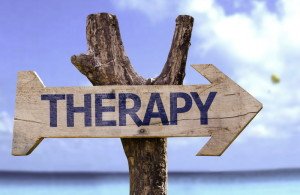
Let’s look at its history.
Far from being the new kid on the block, this type of bodywork has been part of Thailand’s system of natural medicine for hundreds of year.
Long before modern medicine and the pharmaceutical industry came about.
The Thais had a health care system which included sophisticated herbal medicine, Thai Massage Therapy, and shamanic practices which can be loosely compared to what’s known as energy work in the western world.
So Thai Massage is one element of Thailand’s system of natural medicine.
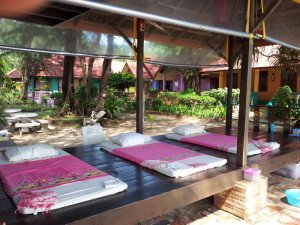
The name “massage” is not really an accurate description since it makes us think of someone lying undressed on a massage table, with the therapist using oil to stroke and knead muscles and tissue.
Thai Massage is using quite a different approach.
It was traditionally practised on the floor instead of on a massage table.
Clients don’t take their clothes off and no oil is being used.
Instead, the therapists use pressure along certain pathways of the body and a large repertoire of body manipulations and stretches.
Thai Massage includes elements which you find in massage, yoga, physical therapy, chiropractic, and energy work or acupressure.
How does Thai Massage work?
The yoga connection is the most obvious since Thai Massage was originally imported from the Indian yoga system.
Many Thai Massage stretches look like versions of applied yoga.
The energy work requires a bit of a shift in thinking.
Western massage is primarily based on physical concepts like anatomy and physiology, i.e. dealing with physical elements like muscles, facia, tissue, tendons or joints.
Thai Massage (and pretty much all Asian healing arts therapies) is based on the concept that there are energy lines running throughout the body which are the underlying cause of health or disease.
This means that in Thai Massage the goal of the treatment is not just to effect a change in the anatomical components of the body (muscles etc.).
But a change in the flow of energy in the body.
If this energy flow is disrupted, blocked or reduced.
The disease will take over from healthy functioning.
When the energy flow is improved through Thai Massage.
The body’s own healing power is activated and strengthened.
You can think of it as a stream which is blocked by a fallen tree which creates an obstruction and turbulence in the water.
Once you remove the tree, the stream flows without any disruption.
One example which is quite well known in the western world is acupuncture which is based on the same principle.
Although it uses needles instead of pressure points, the concept is the same.
Thai Massage Advantages
Thai Massage work on a floor mat allows excellent ergonomics and ideal use of body weight
And also, Thai Massage has several important advantages over most western systems:
- Better ergonomics: Working on a floor mat allows for better ergonomics and use of body weight than working on a Massage Therapy table.
- Therapists can have more power with less effort and with less stress on their bodies.
- Therapist friendly: Thai Massage relies less on the use of hands than its western counterparts.
- Therapists work with hands, forearms, elbows, knees and feet.
- This reduces stress on hands, wrists and thumbs and can preserve or prolong the career of therapists.
- Thai Massage therapists have less risk of developing carpal tunnel syndrome or joint problems in wrist and thumbs.
- Flexibility: Thai Massage is more flexible than western styles.
- It can be done on a floor mat, on a bed, on the carpet in the living room, or even in the park.
- There is no need for strict privacy since clients keep their clothes on.
- Therapists don’t need a massage table, oil or draping sheets.
- Easy adaptation and blending: Thai Massage can be done on a floor mat, or it can be adapted to a massage table.
- It can be done as a stand-alone system, or it can be partially included with your main or existing modality, resulting in an improved system.
When would Thai Massage Therapy not be a good career choice?
Here are three reasons why Thai Massage might not be for you:
- Thai Massage on a floor mat requires more flexibility and agility on the part of the therapist than oil/table massage.
- Its traditional form is not suited for very stiff or overweight therapists, or for people with ankle or knee injuries.
- As a workaround, Thai Massage can be done on a table as well.
- And it can be adapted and modified to be used with whatever modality you practice.
- Thai Massage might not be a good choice for you if you are not able or willing to invest a significant amount of time in your training.
- Contrary to claims both by schools in Thailand and in the western world.
- Thai Massage cannot be learned in a weekend or one week course.
- If your training in Thai Massage is quite limited, you will neither find it enjoyable nor satisfying to practice nor will your clients appreciate it.
- Thai Massage is quite a complex system with more involved techniques than oil/table massage, and it does take time to learn it properly.
- How flexible is your mind?
- If you are convinced that the western model of looking at massage in mostly anatomical and scientific terms is the only correct model.
- So then Thai Massage will not fit into your way of thinking.
- It is based on a different concept of working with energy flow and requires a shift in thinking.
- Without this mental shift, you will miss the essence of Thai Massage.
Why would you want to learn Thai Massage Therapy?
- Thai Massage offers more options for effective therapeutic work than typical western table massage.
- Since it offers hundreds of manipulations and stretches in addition to the massage work. It’s like adding applied yoga to the massage work and getting the benefits of both.
- Thai Massage was never intended to be just a relaxing massage (although it can be very relaxing).
- Its main purpose has always been to function as a health improvement system for the Thai people.
- And it has a proven therapeutic track record which goes back hundreds of years.
- Thai Massage is an up-and-coming modality.
- Looking at a Google trends chart, you can see that Thai Massage’s popularity has been rising steadily for the last decade.
- At the same time, there is a lot less competition compared to Swedish/deep tissue massage.
- Thai Massage often commands higher prices than other modalities.
- Thai Massage skills set you apart from mainstream massage therapy.
- It is seen as a unique speciality and makes your list of offerings more unique and more interesting.
- If done correctly, Thai Massage is more therapist friendly, easier on your body.
- And also, better for your ergonomics than table massage.
- This is because you have better leverage, can apply your body weight more effectively, and can use more body parts when working on a floor mat.
How can you learn Thai Massage Therapy?
There are several options. Let’s look at the pros and cons of them.
Western massage schools: More and more schools are adding Thai Massage to their list of courses.
However, Thai Massage is often taught as a basic sequence of techniques which leaves out most of the true essence of Thai Massage.
After all, if you enrol in a 500-hour training program, and you learn 10 or 20 hours of Thai Massage, you should not expect to become an expert.
Dedicated Thai Massage schools and teachers: It can be a better option to train with a school which specializes exclusively or primarily in Thai Massage.
Often such teachers have studied in Thailand, have a deeper understanding of this modality and offer more extensive training in it.
Studying in Thailand: Every year thousands of visitors come to Thailand to study Thai Massage.
This can be a cost-effective option, especially for longer study programs.
For a one or two week course, your airfare will eat up your savings.
But if you study for a month or two, the cheaper tuition in Thailand is a significant benefit.
In addition, you can enjoy a beautiful country with a fascinating culture and meet lots of fellow students from around the globe which makes the learning experience more interesting and more colourful.
Online or home study training: This is not the best option for students with no previous massage experience.
You should have some hands-on massage training first.
However, for some people on this planet.
Because it can be their only option to learn Thai Massage if there are no schools available where they live.
Massage Therapy Training
Online training can be a good choice if one or several of the following conditions apply:
- You are already an experienced massage therapist and want to add Massage to your repertoire.
- This works best if you are the visual learner.
- You are a yoga teacher and would like to add Thai Yoga Massage (as it is often called) as a highly compatible modality to your offerings.
- This can generate an additional income stream from your existing students and could greatly appreciate by them.
- Or you could add elements of Thai Massage to your yoga classes.
- Yoga teachers can learn it easily since yoga and Thai Massage are members of the same family.
- You like learning at your own pace in the comfort of your home as part of your regular life
- You have obligations like family or a job which don’t allow you to leave home for extended study programs.
- Either you are not in the position to spend thousands of dollars on expensive live training or Thailand travel. If you already have massage experience, online/home study training can be the answer.
- You want to either prepare for live training to get a good understanding of Thai Massage first.
- Either you want to have a permanent Thai Massage training video library which you can refer to at any time.
- Either you want to have both live training and a video version of it as well.
What to look out for with online or home study training
There is a big difference between buying a Thai Massage DVD and enrolling in a real online training program.
The DVD is a one-time purchase.
In most cases, there is no follow up, no support, no teacher interaction, no certification or CEUs.
And also, no additional features. Essentially the DVD provides information, not education.
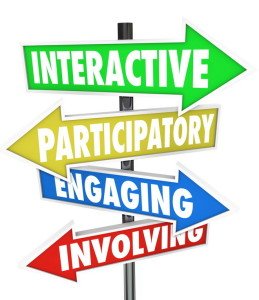
Let’s take my own school, Thai Healing Massage Therapy Academy, as an example.
Our training is not a one-time event like the purchase of a DVD.
Instead, the training delivered gradually at regular intervals to leave enough time for practice, to prevent overwhelm and to encourage regular participation.
Then we have an online forum where students can get support from the teacher.
They can interact with and follow the progress of other students.
We also have a private Facebook group with more training and interaction.
There is even phone/Skype support for students.
We also offer a monitored and verifiable certification program and NCBTMB approved CEUs.
Now instead of information from a DVD, students receive real structured education with support and interaction.
What would happen in an ideal world…
Ideally, anyone who wants to study Thai Massage would have plenty of money and time, could travel to the ideal school, or have such a school nearby, spend a few months to get a first-class education, have permanent access to a good teacher and receive excellent reference materials.
In real life, often you cannot get everything.
One school might be too basic, another too expensive, another too far away, another one has no supporting video or text material, etc.
The decision what and where to study often involves a compromise depending on your situation, budget, available time, and specific interests.
In an ideal world, everyone who is interested in learning Thai Massage would spend a few months in Thailand.
Absorb the cultural elements and get a good feeling for the essence of it.
In actual life, only very few people can or will actually do that.
A good online training program like Thailand based Thai Healing Massage Academy can bring the culture and essence of Thai Massage Therapy to you, provide detailed and quality multi-media training, or complement live training programs.
Click here for more information and a free introductory Thai Massage video course.
B
He is the author of 20 online Thai Massage video training courses, and he is married to a native Thai Massage therapist. They both live in Chiang Mai, Thailand.

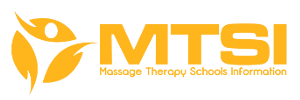





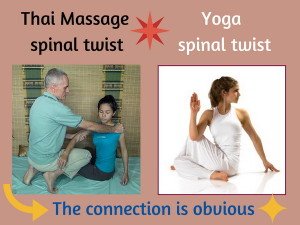
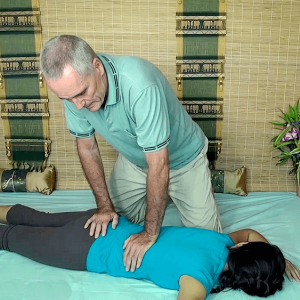
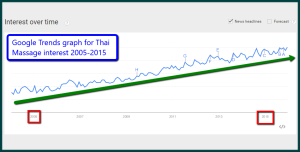

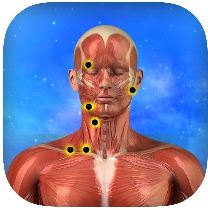
Leave a Reply